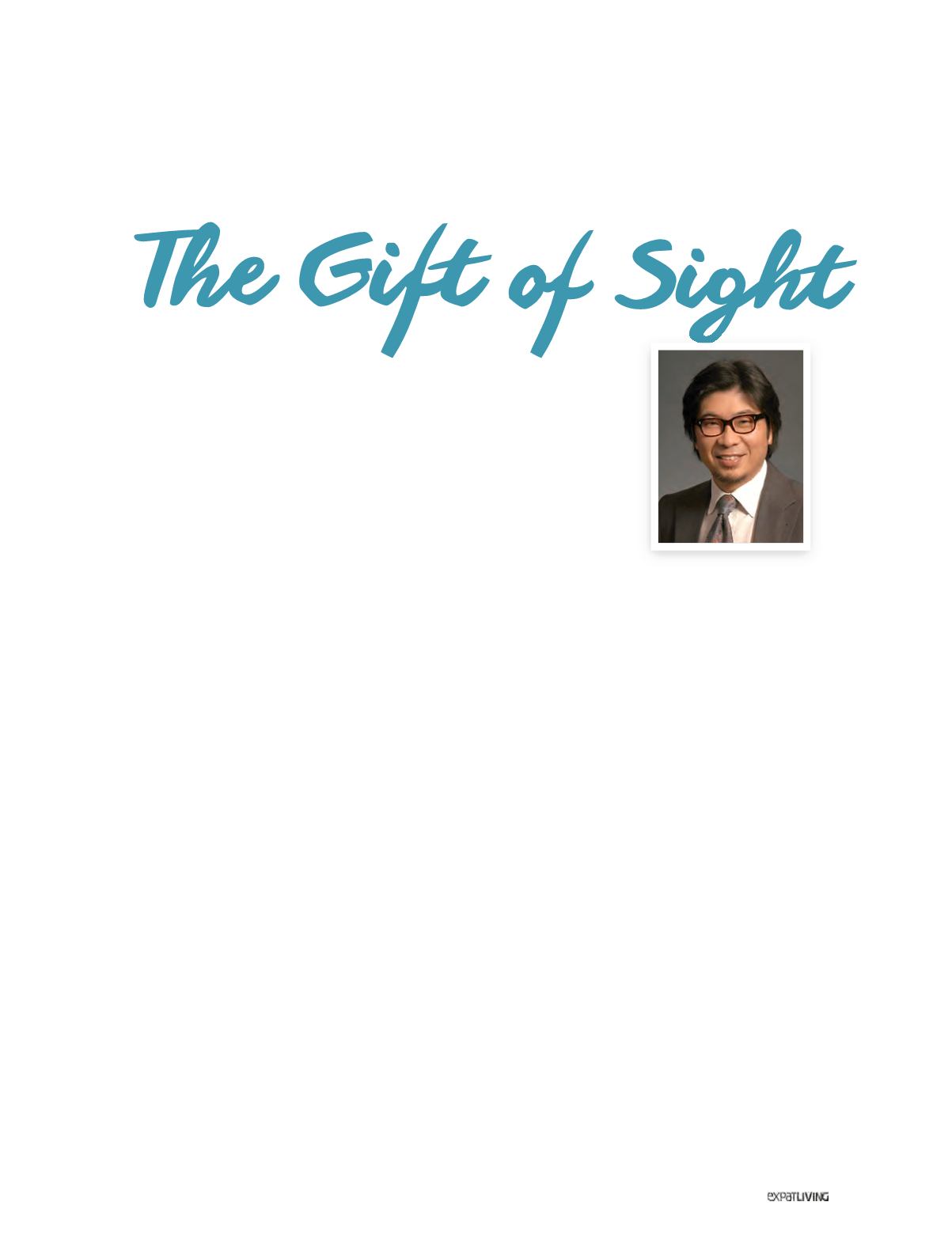

CORNEAL DONATION
303
May15
By Amy Greenburg
Located within the Singapore National Eye Centre (SNEC), the
Singapore Eye Bank
(SEB) is dedicated to helping patients restore
their sight through procuring, processing and distributing the highest
quality tissue for corneal graft surgery. In fact, since its inception in
1991, the SEB has provided nearly 5,000 corneal transplants with a
90-percent graft survival rate. We asked PROFESSOR DONALD TAN,
Medical Director of the SEB, to shed some light on the challenges
faced in the local cornea donation process and SEB’s new initiatives
in managing the corneal transplantation process in Singapore and
the rest of Asia Pacific.
Are corneal transplants more in demand than ever, and, if so, why?
Yes, and there are a number of reasons. Firstly, while corneal blindness occurs at
all ages, it tends to occur more in the elderly due to various ageing diseases or
associated conditions such as cataracts and glaucoma – and longer life expectancy
means our increasing number of elderly patients experiencemore age-related corneal
conditions requiring transplants.
Secondly, this is the information age. Patients contemplating surgery have
unfettered access to information regarding their condition and their treatment options.
More patients from the region are now coming to SNEC as they have heard about
our successful programme offering the latest forms of transplants.
Lastly, to perform reasonably large numbers of corneal grafts depends on three
main factors: well-trained surgeons competent in the latest transplant techniques, good
surgical facilities and clinical infrastructure, and an adequate supply of high-quality
donor corneas. The last-mentioned has been a critical factor in our success, as many
parts of Asia Pacific have poor access to high-quality donor corneas, whereas, in
Singapore, SEB is able to procure corneas upon demand.
We have also set up a sister facility in Sri Lanka, the National Eye Bank of Sri Lanka
(NEBSL), which is able to offer over 1,000 corneas of the highest quality. This, coupled
with our ability to perform the latest transplant procedures and our high success rate,
is why so many patients from the region come to Singapore for transplants.
How have technological advances affected your work?
In the past decade, there have been major changes in the way we perform corneal
transplants. Advances in surgical instruments and techniques (keyhole surgery, for
example) mean lower rejection rates, faster recovery times and more transplants.
While, traditionally, surgery involved replacing the entire cornea (called penetrating
keratoplasty, or PK), today’s procedure of choice, endothelial keratoplasty (EK) –
which currently represents over half our cases – is performed with keyhole surgery
through just a 4-millimetre incision and no sutures. This means faster visual recovery
time, better vision and fewer complications.
In cases where only the front layers of the cornea are affected, we perform deep
anterior lamellar keratoplasty (DALK), a procedure that only replaces the front layers;
transplant rejection is close to zero and graft survival is extremely high. Together,
DALK and EK procedures account
for 80 percent of all transplants in our
progamme today, resulting in much
better visual results.
Do you find that many people are
wiling to donate their corneas?
More than half of those approached
are willing to donate (about a 55 to 60
percent consent rate), which is almost
as high as in the West, unlike most
other Asian countries. But, there is still
a lack of knowledge and awareness
regarding corneal donation that needs
to be addressed, and it is hoped that
creating more awareness will result in
increased local donor rates.
Also, as most potential corneal
donors pass away in hospital wards,
hospices and homes, the SEB counsels
family members on donating their
loved ones’ corneas voluntarily under
the organ donation law known as
The Medical (Therapy, Education and
Research) Act (MTERA), which gives
the next-of-kin the option to donate their
loved ones’ corneas. One of SEB’s roles
is therefore to inform the public that,
if you support cornea donation, you
should let your family members know
beforehand that you wish to donate, so
that they can uphold your intention when
the time comes.



















